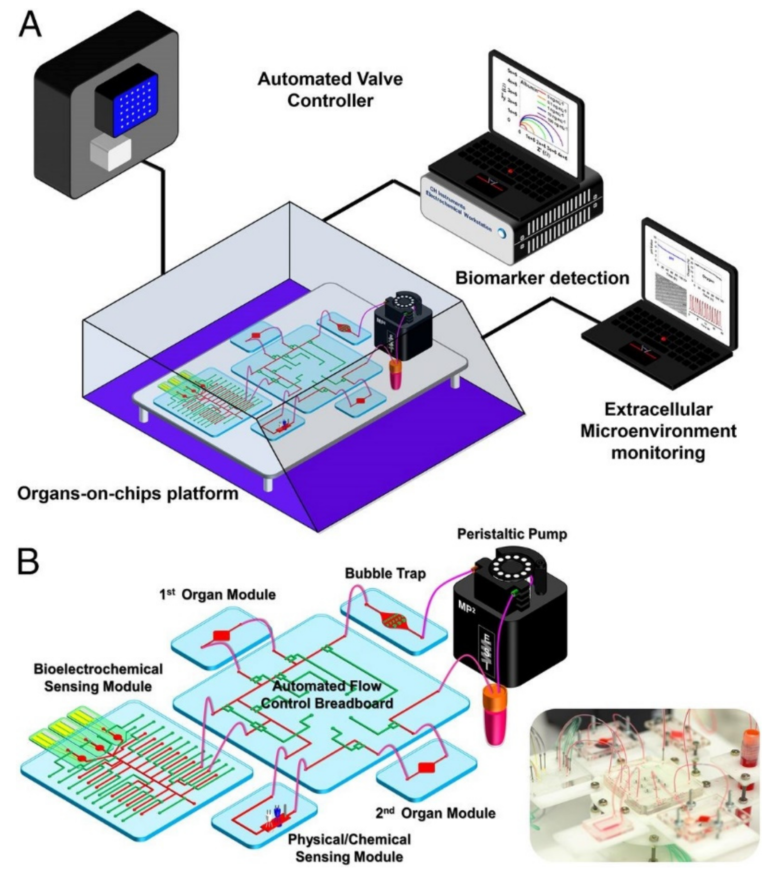A synthetic biosensor that mimics properties found in cell membranes and provides an electronic readout of activity could lead to a better understanding of cell biology, development of new drugs, and the creation of sensory organs on a chip capable of detecting chemicals, similar to how noses and tongues work.
A study, “Cell-Free Synthesis Goes Electric: Dual Optical and Electronic Biosensor vie Direct Channel Integration into a Supported Membrane Electrode,” was published Jan. 18 in the journal ACS Synthetic Biology.
The bioengineering feat described in the paper uses synthetic biology to re-create a cell membrane and its embedded proteins, which are gatekeepers of cellular functions. A conducting sensing platform allows for an electronic readout when a protein is activated. Being able to test if and how a molecule reacts with proteins in a cell membrane could generate a great many applications.
But embedding membrane proteins into sensors had been notoriously difficult until the study’s authors combined bioelectronic sensors with a new approach to synthesize proteins.
“This technology really allows us to study these proteins in ways that would be incredibly challenging, if not impossible, with current technology,” said first author Zachary Manzer, a doctoral student in the lab of senior author Susan Daniel, the Fred H. Rhodes Professor and director of the Robert Frederick Smith School of Chemical and Biomolecular Engineering at Cornell Engineering.
Proteins within cell membranes serve many important functions, including communicating with the environment, catalyzing chemical reactions, and moving compounds and ions across the membranes. When a membrane protein receptor is activated, charged ions move across a membrane channel, triggering a function in the cell. For example, brain neurons or muscle cells fire when cues from nerves signal charged calcium-ion channels to open.
The researchers have created a biosensor that starts with a conducting polymer, which is soft and easy to work with, on top of a support that together act as an electric circuit that is monitored by a computer. A layer of lipid (fat) molecules, which forms the membrane, lies on top of the polymer, and the proteins of interest are placed within the lipids.
In this proof of concept, the researchers have created a cell-free platform that allowed them to synthesize a model protein directly into this artificial membrane. The system has a dual readout technology built in. Since the components of the sensor are transparent, researchers can use optical techniques, such as engineering proteins that fluoresce when activated, which allows scientists to study the fundamentals via microscope, and observe what happens to the protein itself during a cellular process. They can also record electronic activity to see how the protein is functioning through clever circuit design.
“This really is the first demonstration of leveraging cell-free synthesis of transmembrane proteins into biosensors,” Daniel said. “There’s no reason why we wouldn’t be able to express many different kinds of proteins into this general platform.”
Currently, researchers have used proteins grown and extracted from living cells for similar applications, but given this advance, users won’t have to grow proteins in cells and then harvest and embed them in the membrane platform. Instead, they can synthesize them directly from DNA, the basic template for proteins.
“We can bypass the whole process of the cell as the factory that produces the protein,” Daniel said, “and biomanufacture the proteins ourselves.”
With such a system, a drug chemist interested in a particular protein implicated in a disease might flow potentially therapeutic molecules across that protein to see how it responds. Or a scientist looking to create an environmental sensor could place on the platform a particular protein that is sensitive to a chemical or pollutant, such as those found in lake water.
“If you think of your nose, or your tongue, every time you smell or taste something, ion channels are firing,” Manzer said. Scientists may now take the proteins being activated when we smell something and translate the results into this electronic system to sense things that might be undetectable with a chemical sensor.”
The new sensor opens the door for pharmacologists to research how to create non-opioid pain medicines, or drugs to treat Alzheimer’s or Parkinson’s disease, which interact with cell membrane proteins.
More information:
Zachary A. Manzer et al, Cell-Free Synthesis Goes Electric: Dual Optical and Electronic Biosensor via Direct Channel Integration into a Supported Membrane Electrode, ACS Synthetic Biology (2023). DOI: 10.1021/acssynbio.2c00531
Provided by
Cornell University
Citation:
Biosensor could lead to new drugs, sensory organs on a chip (2023, February 7)



